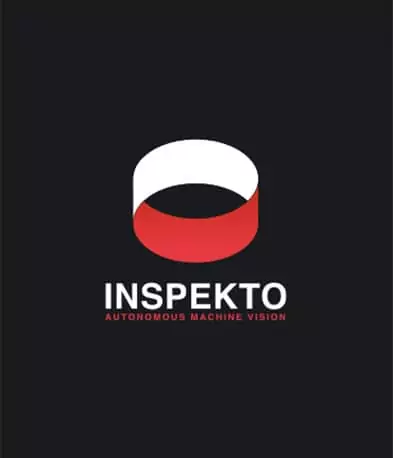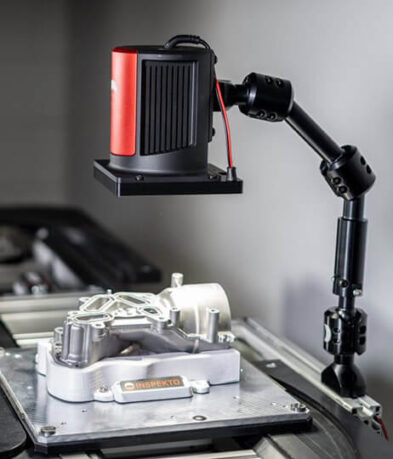IS THE MACHINE THE EXPERT?
Juni 09, 2021
A recent study by the University of Michigan found that multi-tasking has a negative impact on productivity. When you think about it, it makes sense. How many times have you…
A recent study by the University of Michigan found that multi-tasking has a negative impact on productivity. When you think about it, it makes sense. How many times have you had so many tasks to complete, you don’t know where to start? Luckily, we now have technology that can help us. Here Zohar Kantor, Vice President of Sales of Autonomous Machine Vision expert Inspekto, explains how this new technology can be used as an engine for economic growth.
While this study suggests that humans shouldn’t attempt to multi-task, machines are capable of carrying out several tasks at once, if they have the right intelligence. One example of this is Autonomous Machine Vision. But, before we take a deeper look at the capabilities of this ground-breaking technology, let’s consider its predecessor.
Price versus value
When the price of a product outweighs its value, the manufacturer will start to lose business. This is the case with traditional machine vision solutions — they cost upwards of $20,000 and sometimes in the region of $150,000 or more — but fail to give the manufacturer any control over their own quality assurance (QA).
This is because there is no traditional machine vision solution that can be installed and controlled by the manufacturer’s own personnel. Instead, QA managers must rely on a vision systems integrator to create Proof of Concepts, develop a possible solution from many hundreds of good and bad annotated samples, test it, optimize it, and eventually build an installation on the line. Next, they must go through a tedious, expert-dependent software set up stage. The integrator must purchase the necessary components at expense to the manufacturer, including cameras, lenses, lighting, housing and communication and more.
Unfortunately, this is just the beginning of the problem. On top of the capital expenditure, there are operational costs associated with installing a traditional solution. There’s the wait time while the solution is being built and the downtime while it is installed, tested and commissioned. In addition, if there is an environmental change in the plant or the manufacturing line is modified, the manufacturer will have to call on the systems integrator to adjust or redesign the solution.
The future is autonomous
Autonomous Machine Vision was introduced to the industry in November 2018 at VISION, Stuttgart. Now, QA managers can finally take control over their QA processes. Autonomous Machine Vision requires little cost, effort and time to install and run. This means that the manufacturer doesn’t have to rely on a vision systems integrator to design and build a custom solution for a particular point on the production line — they can install an off-the-shelf product in-house.
In the case of Inspekto’s product, the INSPEKTO S70, the system can be installed and begin assessing the quality of products on a production line in under an hour. The system’s artificial intelligence (AI) engines will optimize the camera and illumination settings for the object and environment and then detect and locate the object without any input from the operator. Finally, all that’s needed to set it up for operation is just 20 to 30 good references — no bad samples at all.
The system is ready to go, straight out of the box ─ the QA manager simply has to use a mouse to draw a polygon to mark their areas of interest on the object to be inspected. Once in operation, the system will compare each image with the gold standard, verifying both the shape tolerances and surface variations to identify any defects.
An engine for economic growth
On top of its standard quality assurance capabilities, an Autonomous Machine Vision system will offer a variety of apps priced so they are compliant with the actual value they bring to the manufacturer. This drastically enhances the overall profitability of the line.
Inspekto’s applications further enable archiving of the images and data gathered during inspection. Manufacturers can use this archive to find exactly where the defect was caused and identify the culprit. They can then address the issue before more parts are passed through the same manufacturing process and prevent producing further products that are destined to become scrap.
Many traditional machine vision solutions offer some archiving capabilities, but they are usually only installed at major junctions on the line, due to the high costs, long wait times and downtime required for an integrator to finalize the solution. This means that manufacturers using traditional solutions have no way of easily locating the source of a defect.
Manufacturers will also be able to use Inspekto’s archiving and traceability apps to counteract claims that a defective product has left their premises, when in fact the damage happened during shipment or in further stages of production.
Inspekto also offers a multi-product app for lines where different products need to be inspected on the same location — as is the case on many plastic injection moulding lines. This adds value to the production line in that a single system can adapt itself to inspect a variety of items, something that was unthinkable until the advent of Autonomous Machine Vision. There are also apps to allow products to be counted before they are boxed and apps for gating or sorting. Each app can be set up in minutes by the plant’s own personnel, without any expert assistance whatsoever.
If workers in a manufacturing plant are to focus on just one task at a time, this should be one that brings genuine value to the business and certainly not one that a machine can do even better. Autonomous Machine Vision was brought to market by a team of experts to improve profitability per line for a growing customer base. With increased control over their own quality assurance, QA managers are now free to love their jobs.
You May Also Like

MACHINE VISION: CUTTING THE COST
New technology is changing the machine vision business model. Kakeibo is the Japanese art of saving money. The concept, invented in 1904, involves keeping a budgeting journal to…

THE POISONED APPLE EFFECT
Breaking the chains of Traditional Machine Vision. In Snow White and the Seven Dwarfs, the jealous stepmother of the protagonist orders the title character to be killed. Snow…

DEFINING AUTONOMOUS MACHINE VISION – A NEW CATEGORY
Industrial manufacturing will never be the same. “You never change things by fighting the existing reality. To change something, build a new model that makes the existing model…